Photos: David Patterson Photography

When the proverbial they say to expect the unexpected when diving into a home remodel, the proverbial they are not wrong: permits can halt construction for weeks, cockeyed pipes can be discovered, paint colors can turn out all wrong and so on. This is not where things got interesting in this Cherry Hills Village cottage, though.
The story for its new homeowners, who had been looking for a haven with enough space for visiting children and grandchildren, started after an unignorable roadblock came to light. The home’s original foundation could not support the remodel work they had planned, which meant they needed to rebuild from the ground up.
Despite the fresh start, they changed almost nothing in their blueprint.
The initial renovation strategy was kept nearly identical, with the original first-floor space not made much bigger. A bit of proof: The main level of the original structure measured 3,483 square feet. The main level of the new build is 4,184 square feet. They also didn’t move the home’s placement on their 2.2-acre property an inch. Nestled into the lot’s back corner, the previous owner had created “this oasis of different species of trees, at different ages, layered very nicely,” that the homeowners were determined to preserve, says KGA Studio Architects’ Paul Mahony.
Perhaps this is all because preservation was the name of the game in their makeover tactics. The homeowners were looking to display authentic elements of old English country estates—keeping things as historically accurate as possible. They enlisted Mahony, Steve Diamond of Diamond Homes and interior designer Richelle Ashmore of Your Natural Home to bring the vision to life. “We wanted an old-world feel; a peaceful cottage that would feel like it had been on the site for years,” the homeowner says.
Mahony hit the history books for genuine exterior essentials and emerged with swooping eaves on the roof—constructed from imported slate—copper detailing on the downspouts, nearly full-stucco siding and towering (and skinny) red-brick chimneys, which lead to the estate’s most interesting indoor detail.
The interior features six fireplaces—three of which have antique surrounds and firebrick sourced from Europe—paying homage to a time when homes were heated solely through hearths. “The fireplaces were a key element for us,” says the homeowner. “Their character helped lend to the feeling of being rooted in the deep history of another time.”
Ashmore accompanied the cozy centerpieces with antique furniture from Denver’s Eron Johnson Antiques and a diverse array of surfaces to create the essence of a “little haven nestled in the woods,” she says. Adds Mahony: “One of the things you find with these old English designs is that there is a lot of texture on the walls; a lot of times because the homes grow over years and generations, so you have different materials.”
The team did create a second floor (which was the initial reason for the renovation) to make room for two suites for visiting family. They also redesignated other areas per the homeowners’ strict intentions: “We wanted a comfortable home free of cavernous spaces—one where a single person could feel at ease in any room.” So, each living area was made to have a purpose, including his and her offices—his with a chest for fly-fishing rods and hers set up for yoga—a banquette for playing cards and even an archery range in the basement.
The housewide mission was also, of course, to take advantage of those forested sight lines. Every room, except the master closet, has doors to a patio or outdoor path. In short, “our new home has an old English style with a cottage sensibility,” the homeowner says. “It’s the kind of home you might expect to find hidden in the trees in the English countryside, surrounded by lovely gardens.”
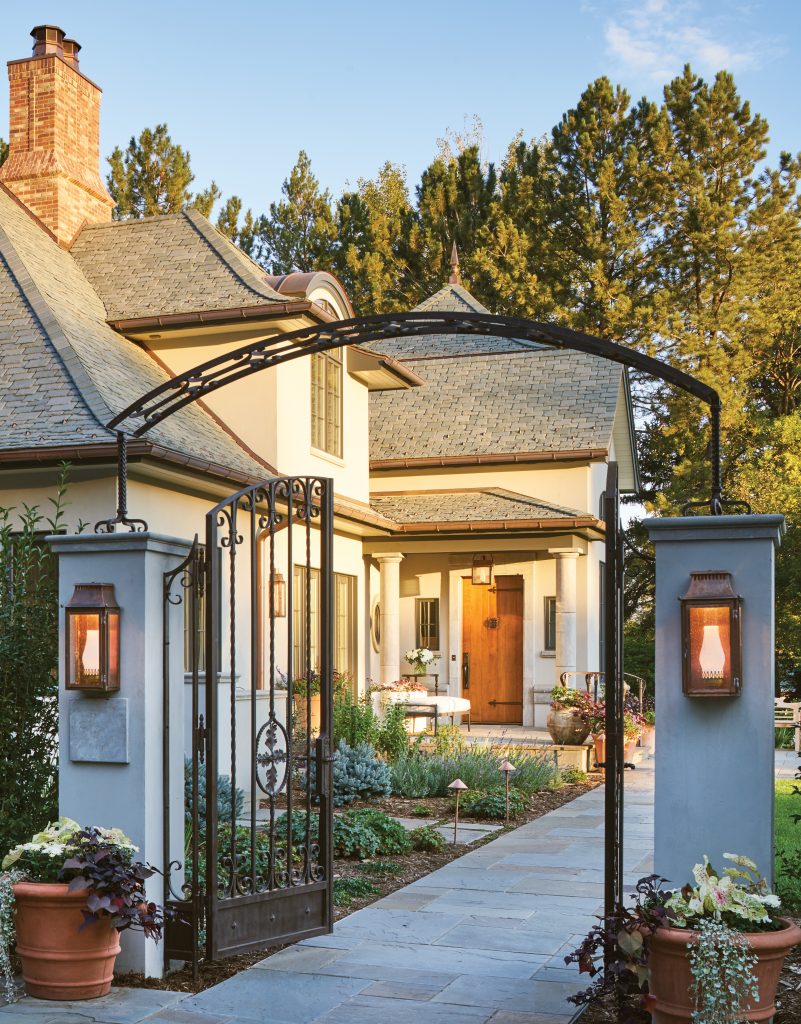
Examples of detailed craftsmanship from local artisans can be found all over the home, but there is no better example than the FRONT GATE, custom designed by Ashmore’s firm and then brought to life by Denver ironworker Max Brun. 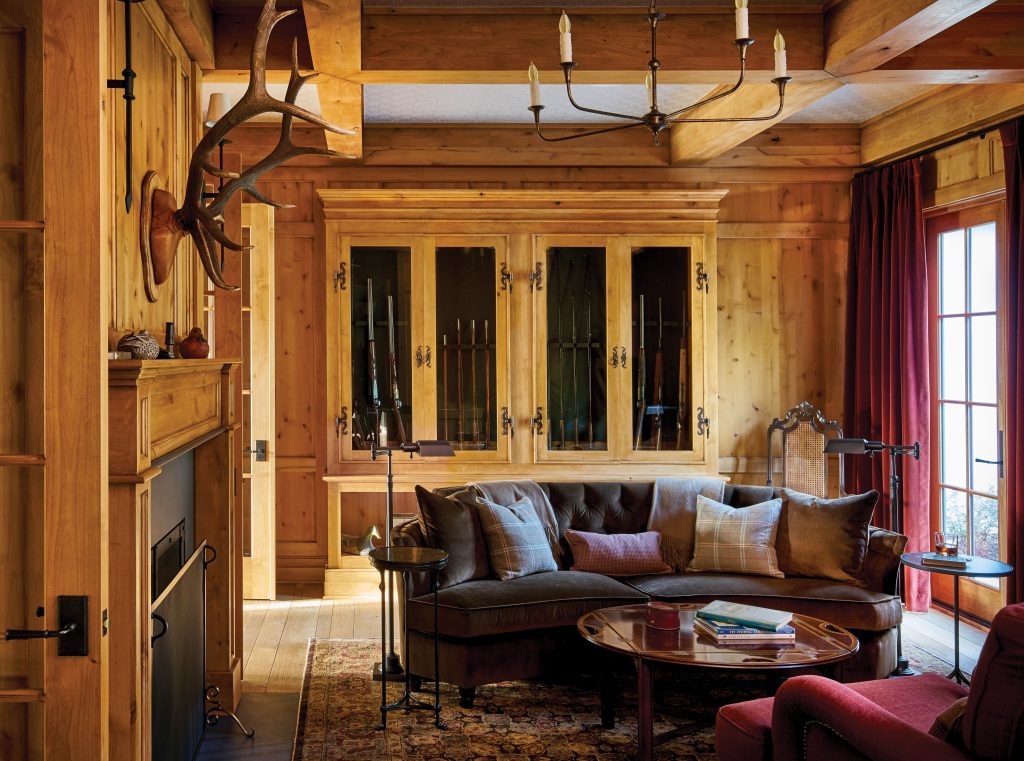
In HIS OFFICE, also known as the DEN, the desk takes a back seat to the fireplace and its inviting sitting area. “We love to be in the den together in winter—it’s a cozy place where we can start a fire and read or watch television together,” the homeowner says. 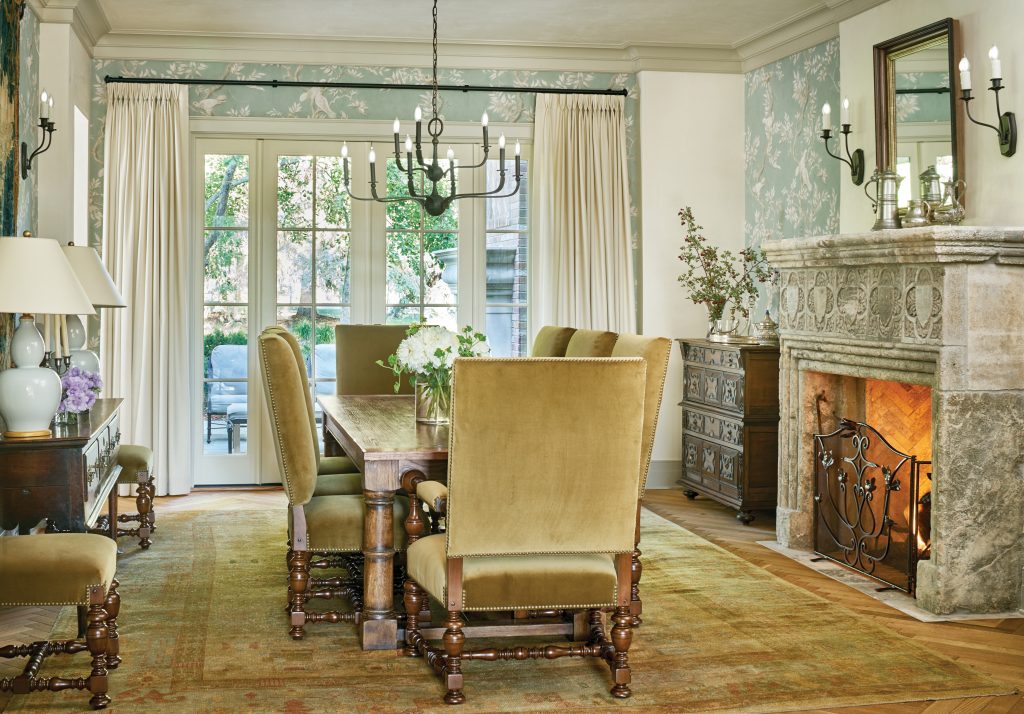
The 400-year-old English fireplace, dining chairs made specially by Mimi London and Lewis and Wood wallpaper make the DINING ROOM Ashmore’s favorite spot in the home. “The couple themselves are wonderfully connected, and the dining room is a beautiful balance of the masculine and feminine coming together,” she says. 
The home’s only STAIRWAY, Ashmore says, was modeled off of Philadelphia’s Independence Hall. 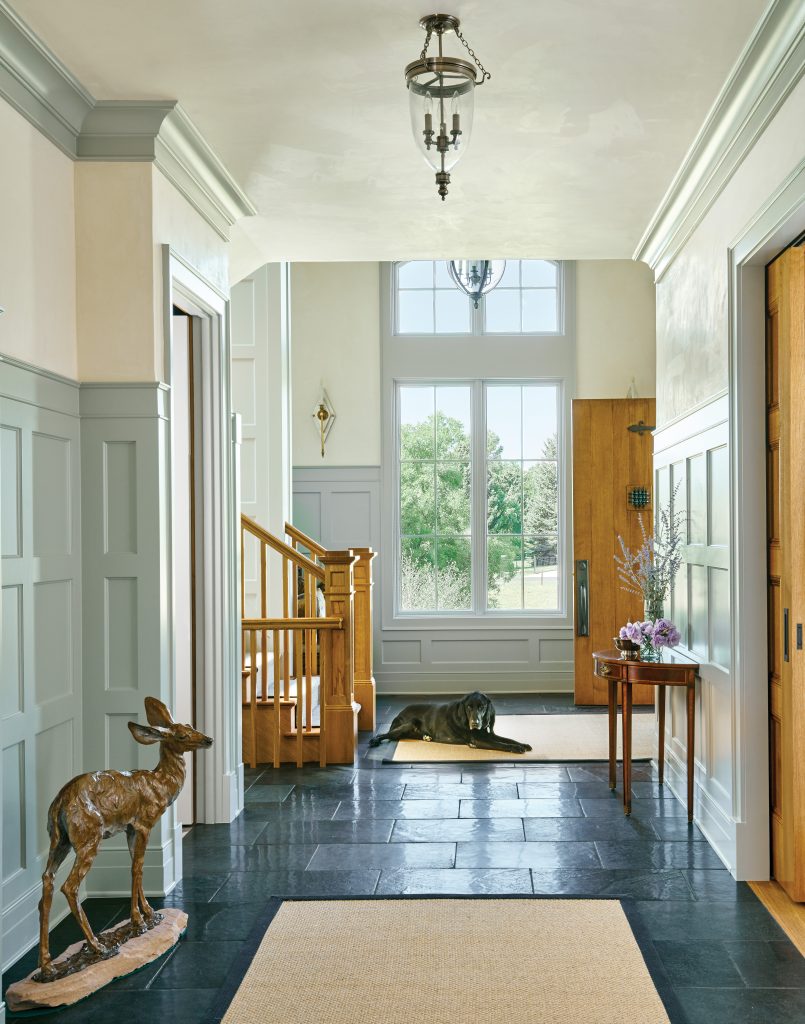
First impressions are about authenticity here. The ENTRYWAY exhibits historic details through the colored millwork pattern on the stairway walls (done by both Russ Douglas of Sierra Woodworks and Bud Wright from Restoring Concepts) and worn, aged limestone flooring. 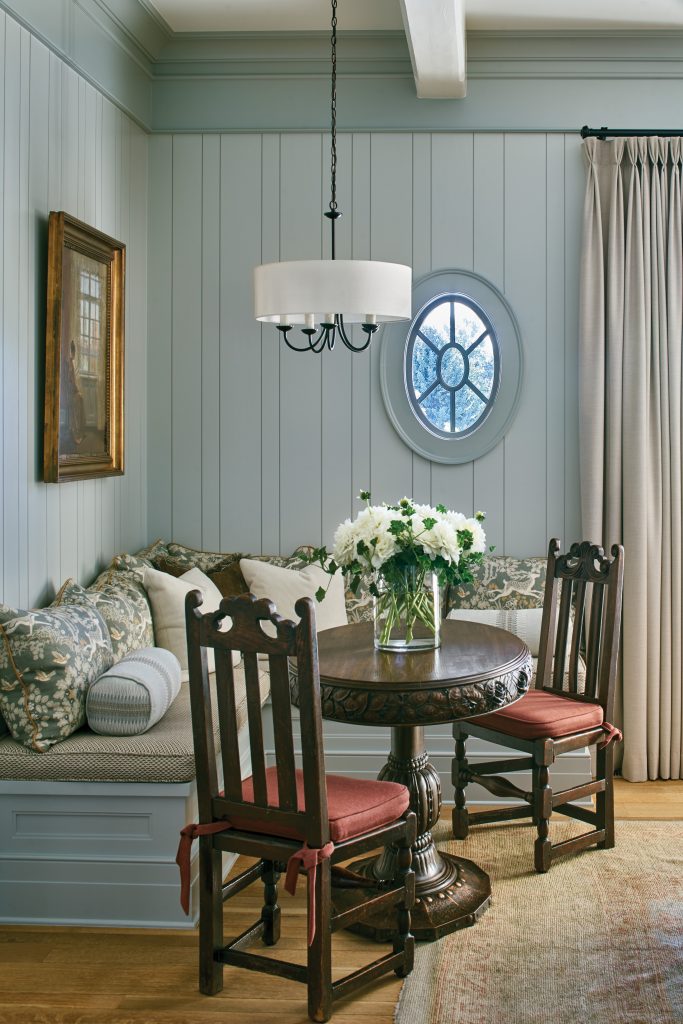
HER BANQUETTE, tucked next to the living room, is a dedicated space for playing cards with friends. 
The 18th-century French fireplace, wool rugs from Azari Rug Gallery, Brunschwig and Fils custom sofa and the garden view make the LIVING ROOM a favorite spot to spend an evening. But the true decorative star is the custom automated tapestry that hides the TV. Custom-ordered from France, the piece goes up like a Roman shade at the push of a button. 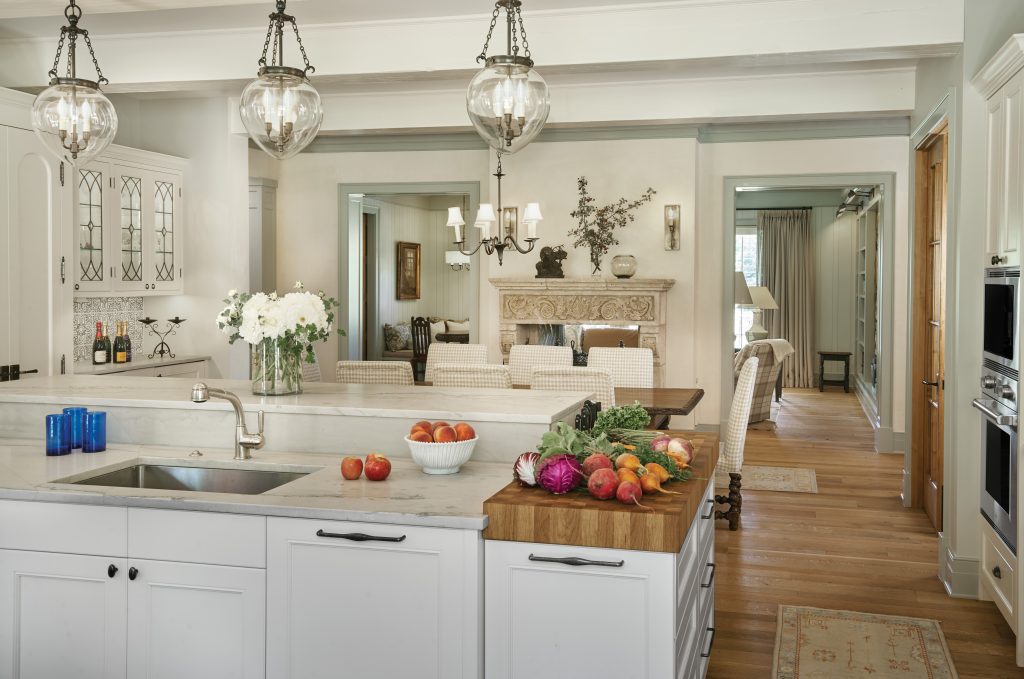
The home’s color scheme—a peaceful blue-green palette—was inspired by the KITCHEN’s unique tile backsplash. Also notice the stained-glass cabinet doors from Ann Wolff Glass Design, which give the cooking and eating area a period feel. 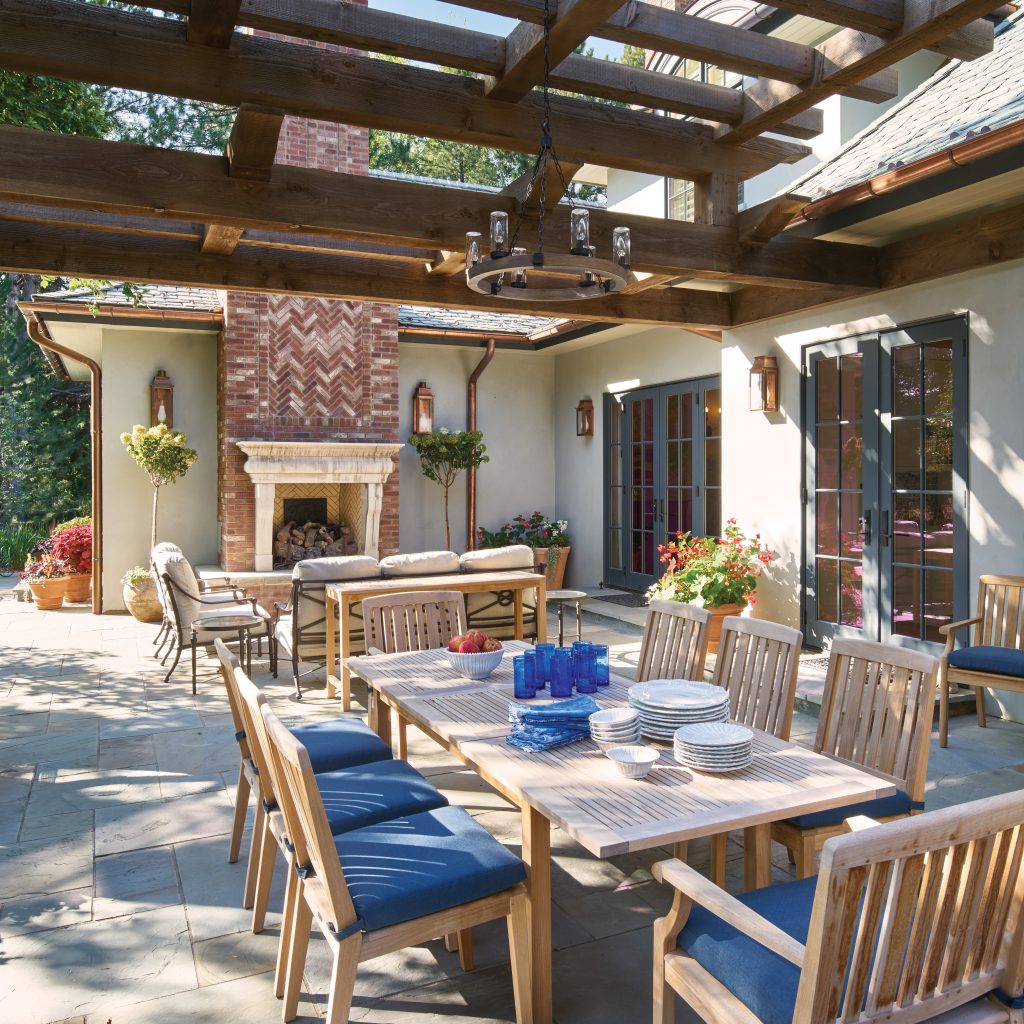
Direct access to the PATIO from the kitchen, master suite and powder room means easy access to the yard’s delicate landscaping. 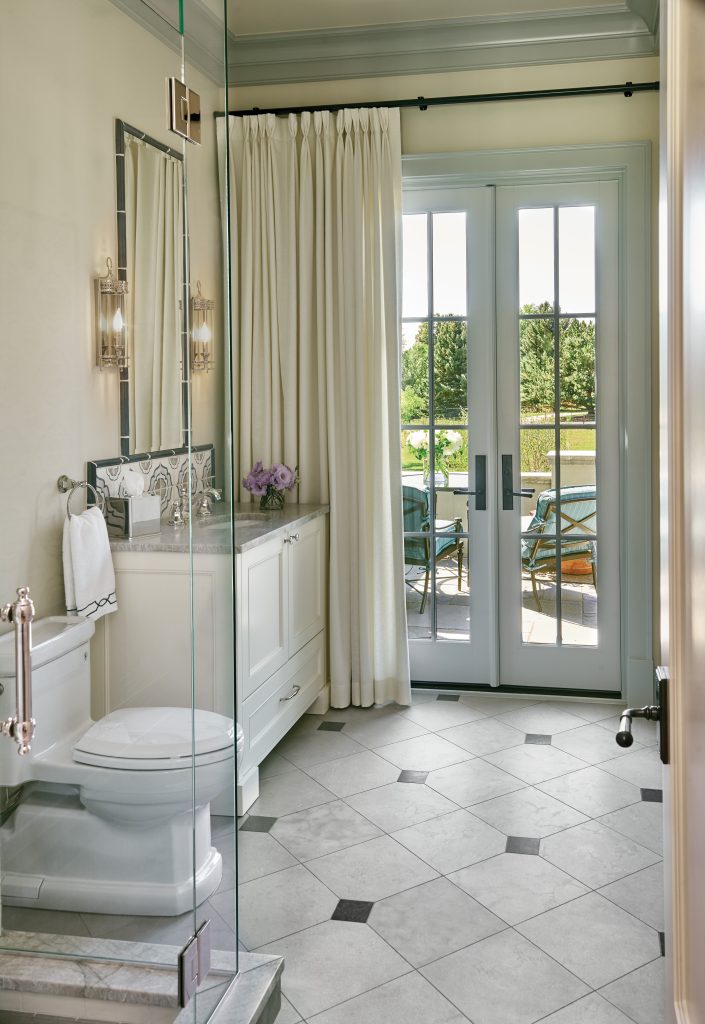
“Our desire from the start was to have a home with a ground-floor master bedroom and MASTER BATHROOM,” says the homeowner.
GET PLANNING
ARCHITECT
Paul Mahony
KGA Studio Architects
Louisville
303.442.5882
BUILDER
Steve Diamond
Diamond Homes
Denver
303.789.4451
INTERIOR DESIGNER
Richelle Ashmore
Your Natural Home


